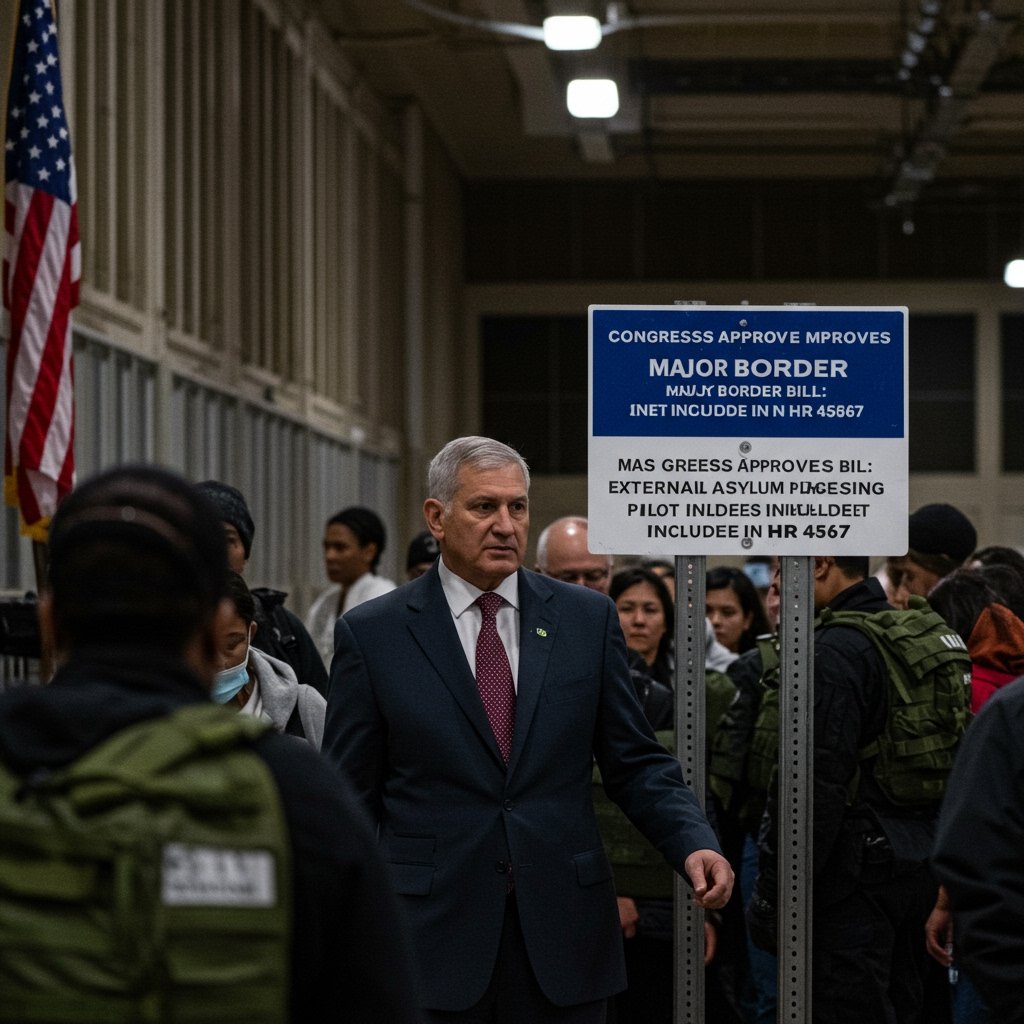Washington D.C. Approves Major Border Legislation
In a significant legislative development, the U.S. Congress has successfully passed the Secure Borders and Pathways Act of 2025, officially designated as HR 4567. This comprehensive legislative package is designed to address multifaceted aspects of immigration policy and enhance security measures along the nation’s borders. The bill’s passage represents a critical juncture in the ongoing debate over border management and immigration reform, signaling Congress’s intent to enact substantial changes. Having cleared both chambers of Congress, albeit by a narrow margin reflecting the complex and often contentious nature of the issues involved, the bill now moves to the executive branch. It currently awaits the President’s signature to become law, a step that is anticipated to be followed swiftly by potential legal challenges from various stakeholders. The Secure Borders and Pathways Act of 2025 consolidates several policy initiatives aimed at bolstering enforcement capabilities, upgrading infrastructure, and introducing new mechanisms for processing asylum claims, including a notable pilot program to be conducted on foreign soil.
Key Provisions: Funding and Personnel Boost
A cornerstone of the Secure Borders and Pathways Act of 2025 is its substantial allocation of financial resources towards enhancing border security operations. The bill authorizes an increase in funding totaling $15 billion. This significant investment is earmarked for deployment across critical areas identified as priorities for modernizing border control. A primary focus of this funding increase is the acquisition and implementation of advanced technology. This includes sophisticated surveillance systems, improved screening equipment at ports of entry, enhanced data processing capabilities, and potentially other technological tools designed to increase situational awareness and interdiction effectiveness along the border regions. Complementing the technological upgrades, a substantial portion of the new funding is directed towards expanding the workforce responsible for border enforcement. The act mandates the hiring of 5,000 new Customs and Border Protection (CBP) agents. This personnel increase is intended to augment the current force, providing additional manpower for patrolling border areas, processing individuals encountered at the border, and conducting enforcement operations. The combined investment in technology and personnel aims to create a more robust and efficient border security apparatus.
The External Asylum Processing Pilot Program
Among the most discussed and, according to the original summary, controversial components of the Secure Borders and Pathways Act of 2025 is the establishment of an asylum processing pilot program. This innovative, albeit debated, initiative proposes a significant shift in how certain asylum claims are initially handled. The pilot program is specifically designed to conduct asylum processing before individuals reach the physical border of the United States. The location designated for this pilot program is Tapachula, Mexico. Situated near Mexico’s southern border, Tapachula is a key transit point for many migrants traveling north. The pilot is scheduled to commence on April 1, 2025. The underlying principle is that by establishing a mechanism for processing claims externally, the program could potentially manage the flow of asylum seekers arriving directly at the U.S. border, streamline the process for eligible individuals, and deter unfounded claims before migrants undertake the perilous journey to the United States. While proponents argue it could bring order and efficiency to the asylum system, critics often raise concerns about access to legal counsel, fairness of proceedings outside U.S. jurisdiction, and potential humanitarian implications.
Legislative Journey and Anticipated Future
The passage of the Secure Borders and Pathways Act of 2025 (HR 4567) through the U.S. Congress underscores the urgency lawmakers feel regarding border security and immigration issues, even as the narrow margin of victory highlights deep divisions within the legislative body on the specifics of proposed solutions. The bill’s journey through Congress involved extensive debate and negotiation, ultimately securing enough votes to pass. With legislative approval secured, the focus now shifts to the executive branch. The bill has been sent to the President, whose signature is required for it to be officially enacted into law. However, the path forward for the Secure Borders and Pathways Act of 2025 is not expected to be entirely smooth. Given the complexity of the legislation, particularly concerning the external asylum processing pilot program in Tapachula, Mexico, and its implications for domestic and international law, the bill is widely anticipated to face potential legal challenges. These challenges could come from various sources, including civil rights organizations, immigration advocacy groups, or even potentially from states. Such legal actions could seek to block the implementation of certain provisions, most notably the external processing pilot set to begin on April 1, 2025, arguing they are unconstitutional or violate existing statutes or treaties. The outcome of these potential legal battles will ultimately determine the full scope and impact of this landmark legislation.






